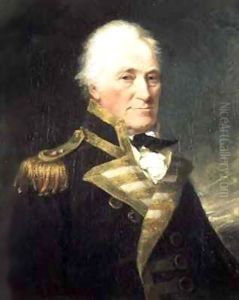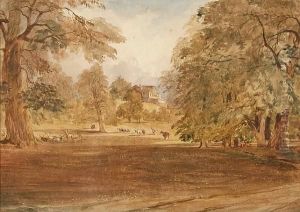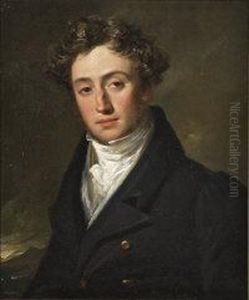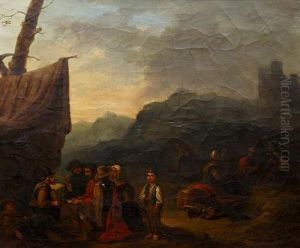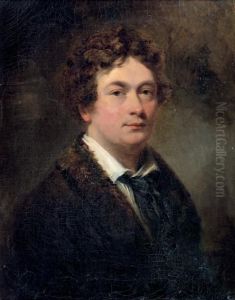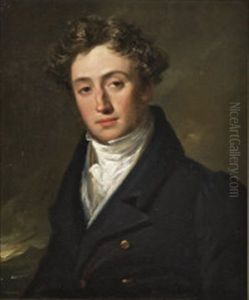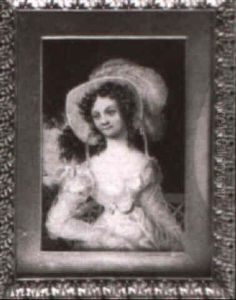William Mineard Bennett Paintings
William Mineard Bennett was an English painter known primarily for his miniature portraits. Born in 1787, Bennett spent most of his life in England, where he developed his skills and established himself as a notable artist in the miniature painting tradition, which was particularly popular in the 18th and early 19th centuries.
Bennett's early life and training are not extensively documented, but like many artists of his time, he likely underwent an apprenticeship or studied under a master miniature painter. By the early 19th century, he had become a professional artist. He exhibited his works at the Royal Academy of Arts in London from 1808 to 1837, which suggests that he was well-regarded among his contemporaries.
Miniature painting was a highly valued art form during Bennett's career. It required exceptional skill to capture the likeness and character of the subject in such a small format. These paintings were often used as personal mementos or keepsakes, and they were typically executed in watercolor on ivory. Bennett's miniatures are characterized by their fine detail, vibrant colors, and the clear influence of the Regency style, which was in vogue at the time.
Unfortunately, Bennett's work, like that of many of his peers, became less popular with the advent of photography, which offered a new and more accessible means of capturing likenesses. As a result, the demand for miniature portraits declined significantly during the latter part of the 19th century.
William Mineard Bennett died in 1844, leaving behind a legacy of delicate and detailed portraits that continue to be appreciated by collectors and art historians. His works are now considered important examples of Regency era art and are studied for their technical proficiency and historical value.
